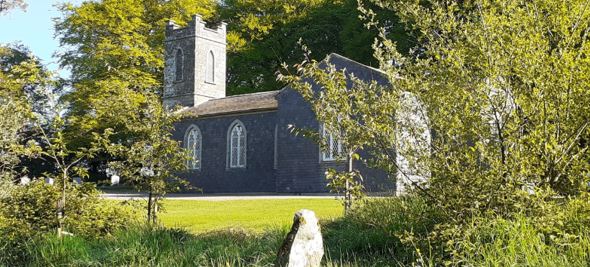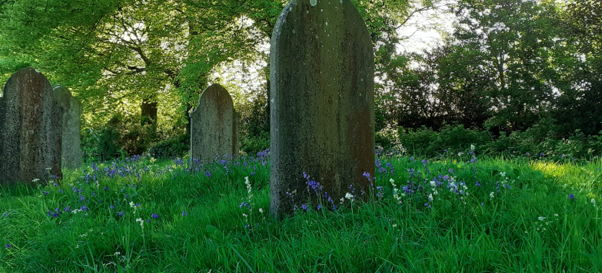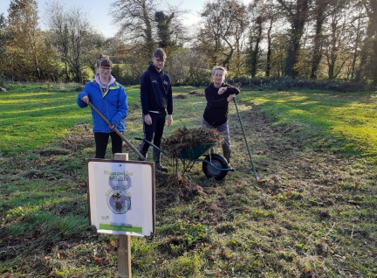
‘For God so loved the world, that he gave his one and only Son …’ (John 3:16). Jesus Christ, by his ministry, his teachings, and his closeness to nature, shows us that he loves all creation, Jewish and Gentile people, the birds and the flowers, the seen and the unseen. In the limited way many humans view the world, the expanse of God’s love, God’s understanding and God’s interest in all creation, should fill us with awe. Scripture tells us that nature praises God outside the church building, just as our hymns, psalms and canticles sing the praise of the Almighty indoors.
‘Shout with joy to God, all the earth! Sing the glory of his name; make his praise glorious’. (Psalm 66:1)
With all this in mind, the worldwide Anglican Communion charges each follower of Christ, and every parish in the Church, to: To strive to safeguard the integrity of creation, and sustain and renew the life of the earth. (www.anglicancommunion/mission/marks-of-mission)
ST PETER’S CHURCH IS RENEWING THE LIFE OF THE EARTH IN MONART
In 2016, Rev. Canon Nicola Halford, as Rector, invited the congregations of Enniscorthy and Monart Union to adopt strategies to enhance biodiversity around each of the five churches, including St Peter’s Church. A number of parishioners, including Ann Gethings, a local farmer, chef and member of the Wexford Field Naturalists Club, were delighted to accept this invitation. Ann’s advice for any parish with a similar interest is to initially leave a small patch to grow naturally, just cutting at the end of September or early October. Leave the cut grass for about a week so that any seeds can fall away to the ground. Then, on a dry day, rake away the mown grass. No need to add wildflower seed, or anything else. With patience, after about two years, you will notice native wild flowers re-appearing.
VISITORS WELCOME BUT RESPECT GRAVEYARD & ENVIRONMENT
Summer is a good time to visit this biodiversity oasis, which won the Diocesan Environmental Awareness Award in 2017. Head for St Peter’s Church, Monart, near Enniscorthy (Y21 E3 36). It’s important to know that wildflower plants such as orchids do not survive if they are transplanted, because they depend on mycorrhizal fungi which develop where they grow. Without these fungal soil networks, they die. In respecting the wild flowers if one is visiting, one also respects the memories of those buried there, some graves dating from the Great Famine. So please take nothing more than photographs!

‘MANAGED FOR WILDLIFE’ SIGNS EXPLAIN WHY GRASS IS UNCUT
The All-Ireland Pollinator Plan website has templates which can be downloaded and displayed on any patch of land which only gets mown in the autumn to encourage biodiversity, wild flowers, pollinators, and nature in general.
WILDFLOWERS BRING POLLINATORS WHICH BRING MORE LIFE
Wild flowers give rise to wild seed, which encourages yellowhammers, willow warblers, chiffchaff and blackcaps, etc. all of which are now found around St Peter’s Church grounds. Canon Nicola also asked Enniscorthy Men’s Shed to encourage more wildlife by making bat boxes, nest boxes for owls and bluetits, as well as a bench for visitors.
MOWING, THEN RAKING, IN AUTUMN ARE ENJOYABLE ACTIVITIES
Managing a wild flower area involves regularly cutting away briars, and not mowing the grass until most of the wild flowers have gone over and set seed. Generally, Roy Oakes mows the wildflower patch. Brendan Durnan used to strim the patch in the autumn, before the area got bigger. It’s good practise to leave the mown grass in situ for a week to allow any wildflower seeds to fall back into the soil for next year. Here are the all-important volunteers raking the autumn mown grass on a dry day, Shannon Plunkett, William Durnan and Linda Durnan, along with Joyce Deacon.

100 PLANT SPECIES RECORDED HERE IN BIODIVERSITY SURVEY
Mr Paul Green, a botanist with The National Biodiversity Data Centre in Waterford, visited St Peter’s Church in 2023, to record naturally occurring wild plants in the church grounds. A 100 species were identified, some of which had not been found growing in the area since 1956. One of the more common species is the Bugle (Ajuga reptans). Other wonderfully named plants found include, Good Friday Grass, Slender St John’s Wort, Black Spleenwort, and Field Forget-me-not.
WHERE CAN I GO TO FIND OUT MORE INFORMATION?
www.biodiversityireland.ie/practical-advice-on-managing-wildflower-meadows
www.ecocongregationireland.com
